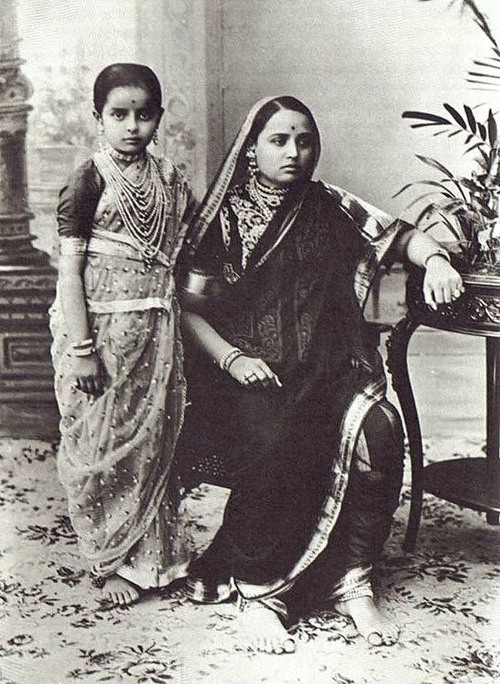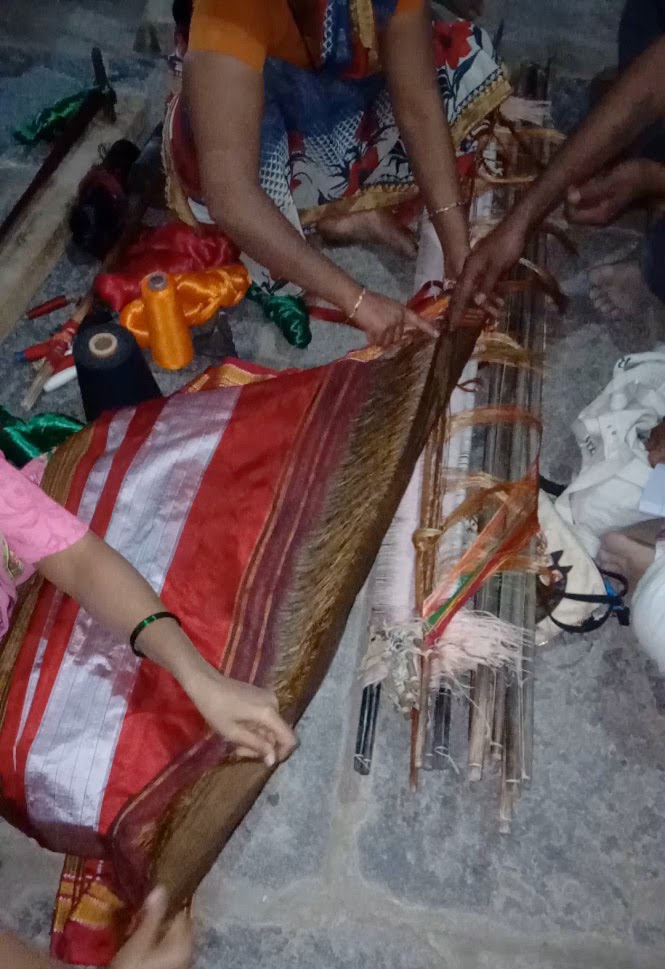|
Molakalmuru Sari
Molakalmuru Sari, also known as ''Karnataka Kanchipuram'', is the traditional silk sari that is weaved in the Molakalmuru, Chitradurga district, Karnataka, India. In 2011, it was granted a Geographical Indication tag and its tag number is 53. The motifs include that of fruits, animals, and flowers. See also *Ilkal saree *Byadagi chilli * Mysore Sandalwood Oil *Navalgund Durries *Coorg orange Coorg orange, also called Coorg mandarin, is a cultivar of orange from Kodagu in Karnataka. It was given the Geographical Indication status in 2006. Description In the 1960s, Coorg orange was grown in land of 24,000 hectare area. In recent year ... References {{Saree Saris Chitradurga district Culture of Karnataka Geographical indications in Karnataka ... [...More Info...] [...Related Items...] OR: [Wikipedia] [Google] [Baidu] |
Sari
A sari (sometimes also saree or shari)The name of the garment in various regional languages include: * as, শাৰী, xārī, translit-std=ISO * bn, শাড়ি, śāṛi, translit-std=ISO * gu, સાડી, sāḍī, translit-std=ISO * hi, साड़ी, sāṛī, translit-std=ISO * kn, ಸೀರೆ, sīre, translit-std=ISO * knn, साडी, कापड, चीरे, sāḍī, kāpaḍ, cīrē, translit-std=ISO * ml, സാരി, sāri, translit-std=ISO * mr, साडी, sāḍī, translit-std=ISO * ne, सारी, sārī, translit-std=ISO * or, ଶାଢ଼ୀ, śāṛhī, translit-std=ISO * pa, ਸਾਰੀ, sārī, translit-std=ISO * ta, புடவை, puṭavai, translit-std=ISO * te, చీర, cīra, translit-std=ISO * ur, ساڑى, sāṛī, translit-std=ISO is a women's garment from the Indian subcontinent, that consists of an un-stitched stretch of woven fabric arranged over the body as a robe, with one end tied to the waist, while ... [...More Info...] [...Related Items...] OR: [Wikipedia] [Google] [Baidu] |
Molakalmuru
Molakalmuru is a taluk in Chitradurga district in the Indian state of Karnataka. It is near the border of Karnataka and Andhra Pradesh. It borders the Rayadurg taluk of Ananthpur district of Andhra Pradesh. Legend has it that its name means "broken knees" in Kannada, referencing a battle between the native Indians and the British in which, due to the rocky and hilly terrain, British soldiers suffered many broken knees in their defeat. The town is famous for the unique Molkalmuru sarees manufactured here. Demographics As of the 2011 Indian census, Molakalmuru had a population of 15,797. Males constitute 50.35% of the population and females 49.65%. Molakalmuru has an average literacy rate of 71.44%, lower than the national average of 74.04%. Male literacy is 77.66%, and female literacy is 65.13%. 11.77% of the population is under 6 years of age. Molakalmuru Silk Sarees Molakalmuru silk sarees are the traditional sarees that are woven in the region. Molakalmuru sarees are also c ... [...More Info...] [...Related Items...] OR: [Wikipedia] [Google] [Baidu] |
Chitradurga District
Chitradurga district is an administrative district of Karnataka state in southern India. The city of Chitradurga is the district headquarters. Chitradurga gets its name from Chitrakaldurga, an umbrella-shaped lofty hill found there. Tradition dates Chitradurga District to the period of the Ramayana and Mahabharata. The whole district lies in the valley of the Vedavati River, with the Tungabhadra River flowing in the northwest. During the British times it was named Chitaldroog. The district was practically ruled by all the well known dynasties that ruled Karnataka. A historical places like Jain basadi of Heggere,a pilgrimage centre for Jain's in district. Demographics According to the 2011 census Chitradurga district has a population of 1,659,456, roughly equal to the nation of Guinea-Bissau or the US state of Idaho. This gives it a ranking of 297th in India (out of a total of 640). The district has a population density of . Its population growth rate over the decade 2001–20 ... [...More Info...] [...Related Items...] OR: [Wikipedia] [Google] [Baidu] |
Karnataka
Karnataka (; ISO: , , also known as Karunāḍu) is a state in the southwestern region of India. It was formed on 1 November 1956, with the passage of the States Reorganisation Act. Originally known as Mysore State , it was renamed ''Karnataka'' in 1973. The state corresponds to the Carnatic region. Its capital and largest city is Bengaluru. Karnataka is bordered by the Lakshadweep Sea to the west, Goa to the northwest, Maharashtra to the north, Telangana to the northeast, Andhra Pradesh to the east, Tamil Nadu to the southeast, and Kerala to the southwest. It is the only southern state to have land borders with all of the other four southern Indian sister states. The state covers an area of , or 5.83 percent of the total geographical area of India. It is the sixth-largest Indian state by area. With 61,130,704 inhabitants at the 2011 census, Karnataka is the eighth-largest state by population, comprising 31 districts. Kannada, one of the classical languages of India, ... [...More Info...] [...Related Items...] OR: [Wikipedia] [Google] [Baidu] |
India
India, officially the Republic of India (Hindi: ), is a country in South Asia. It is the seventh-largest country by area, the second-most populous country, and the most populous democracy in the world. Bounded by the Indian Ocean on the south, the Arabian Sea on the southwest, and the Bay of Bengal on the southeast, it shares land borders with Pakistan to the west; China, Nepal, and Bhutan to the north; and Bangladesh and Myanmar to the east. In the Indian Ocean, India is in the vicinity of Sri Lanka and the Maldives; its Andaman and Nicobar Islands share a maritime border with Thailand, Myanmar, and Indonesia. Modern humans arrived on the Indian subcontinent from Africa no later than 55,000 years ago., "Y-Chromosome and Mt-DNA data support the colonization of South Asia by modern humans originating in Africa. ... Coalescence dates for most non-European populations average to between 73–55 ka.", "Modern human beings—''Homo sapiens''—originated in Africa. Then, int ... [...More Info...] [...Related Items...] OR: [Wikipedia] [Google] [Baidu] |
Geographical Indication
A geographical indication (GI) is a name or sign used on products which corresponds to a specific geographical location or origin (e.g., a town, region, or country). The use of a geographical indication, as an indication of the product's source, is intended as a certification that the product possesses certain qualities, is made according to traditional methods, or enjoys a good reputation due to its geographical origin. Article 22.1 of the TRIPS Agreement defines geographical indications as ''"...indications which identify a good as originating in the territory of a Member f the World Trade Organization or a region or locality in that territory, where a given quality, reputation or other characteristic of the good is essentially attributable to its geographical origin."'' ''Appellation d'origine contrôlée'' ('Appellation of origin') is a sub-type of geographical indication where quality, method, and reputation of a product originate from a strictly defined area specified in ... [...More Info...] [...Related Items...] OR: [Wikipedia] [Google] [Baidu] |
Indian Patent Office
The Office of the Controller General of Patents, Designs and Trade Marks (CGPDTM) generally known as the Indian Patent Office, is an agency under the Department for Promotion of Industry and Internal Trade which administers the Indian law of Patents, Designs and Trade Marks. History Foundation On 28 February 1856, the Government of India promulgated legislation to grant what was then termed as "exclusive privileges for the encouragement of inventions of new manufactures". On 3 March 1856, a civil engineer, George Alfred DePenning of 7, Grant's Lane, Calcutta petitioned the Government of India for grant of exclusive privileges for his invention — "An Efficient Punkah Pulling Machine". On 2 September, DePenning, submitted the Specifications for his invention along with drawings to illustrate its working. These were accepted and the invention was granted the first ever Intellectual Property protection in India. Amendments to the Patents Act & Rules Amendments (in 1999, 2002, 20 ... [...More Info...] [...Related Items...] OR: [Wikipedia] [Google] [Baidu] |
Ilkal Saree
Ilkal sari is a traditional form of ''sari'' which is a common feminine wear in India. Ilkal sari takes its name from the town of Ilkal in the Bagalkot district of Karnataka state, India. Ilkal saris are woven using cotton warp on the body and art silk warp for border and art silk warp for pallu portion of the sari. In some cases instead of art silk, pure silk is also used. History Ilkal was an ancient weaving centre where the weaving seems to have started in the 8th century AD.Brief history of Ilkal saris is provided by The growth of these saris is attributed to the patronage provided by the local chieftains in and around the town of Bellary. The availability of local raw materials helped in the growth of this sari. About 20000 people in the town of Ilkal are engaged in sari-weaving.The history of Indian saris is discussed by Uniqueness * The uniqueness of sari is joining of the body warp with pallu warp with a series of loops locally called as TOPE TENI technique. * ... [...More Info...] [...Related Items...] OR: [Wikipedia] [Google] [Baidu] |
Byadagi Chilli
Byadagi chilli ( kn, ಬ್ಯಾಡಗಿ ಮೆಣಸಿನಕಾಯಿ) is a famous variety of chilli mainly grown in the Indian state of Karnataka. It is named after the town of Byadgi which is located in the Haveri district of Karnataka. It is sometimes written as Bedgi in some super markets and grocery stores in India. The business involving Byadagi chillis has the second largest turnover among all chilli varieties of India. An oil, oleoresin extracted from these chillies is used in the preparation of nail polish and lipsticks. Byadagi chilli is also known for its deep red colour and is less spicy and is used in many food preparations of South India. Byadagi chilli has been accorded Geographical Indication (GI) in February 2011. Its GI tag is 129. List of Geographical Indications in India Byadagi chillies come in two types: dabbi and kaddi. Byadagi dabbi, which is small and plump, is more popular for its colour, flavour and taste. Though it has more seeds, it is less spicy ... [...More Info...] [...Related Items...] OR: [Wikipedia] [Google] [Baidu] |
Mysore Sandalwood Oil
Mysore Sandalwood Oil is a trademarked perfume oil extracted from the ''Santalum album'' variety of sandalwood tree (also known as a "royal tree") in the Mysore district of Karnataka, India. The tree species is said to be one of the best varieties in the world. History Initially, sandalwood oil was extracted in India by crude methods. Before World War I, sandalwood from the Mysore district was distilled in Germany and sold there. However, when World War I broke out in 1914, this route of extraction had to be closed down, resulting in a loss of revenue to the exchequer. Due to this closure to the market, the Maharajah of Mysore appointed Alfred Chatterton, the Director of Industries in Mysore to develop the distillation of the oil. Chatterton enlisted the help of Professors J. J. Sudborough and H. E. Watson who extracted the first sample of sandalwood oil in India at the Indian Institute of Science. In 1916–17, the sandalwood oil distillery was established in Mysore by the then ... [...More Info...] [...Related Items...] OR: [Wikipedia] [Google] [Baidu] |
Navalgund Durries
Navalgund durries, geographically tagged in India, are woven durries or a type of Indian rug with geometric designs, birds, and animal designs from Navalgund in Dharwad district of Karnataka, India This durrie has been registered for protection under the Geographical indication of the Trade Related Intellectual Property Rights (TRIPS) agreement. In 2011, it was listed as "Navalgund Durries" under the GI Act 1999 of the Government of India with registration confirmed by the Controller General of Patents Designs and Trademarks under Class 27 vide application number 61 of 27 June 2011. The logo for this durrie was registered under application number 512, dated 8 January 2015. Location Navalgund, where the hand-made Navalgund durries are made, is located within the geographical coordinates of . History Nuvulgund durrigullu, also known as "jumkhaanaa" gullu in Kannada language, were initially made by a group of weavers of Bijapur who used to live in the Jumkhaan Gulli during the re ... [...More Info...] [...Related Items...] OR: [Wikipedia] [Google] [Baidu] |


